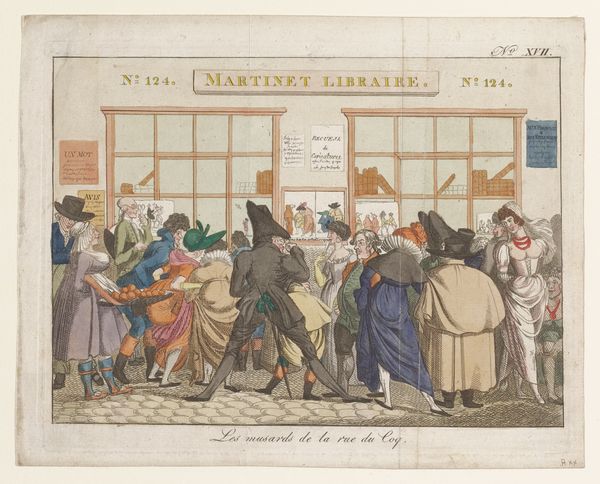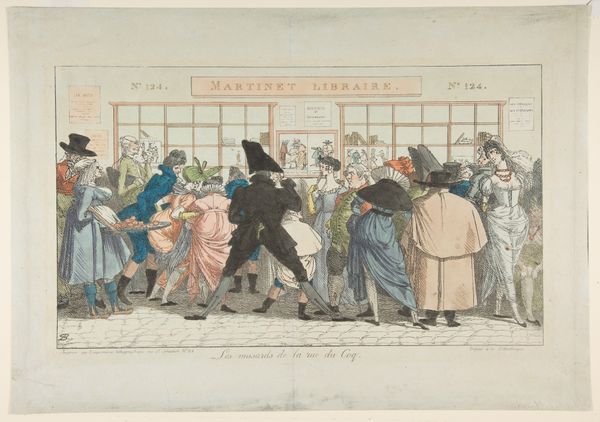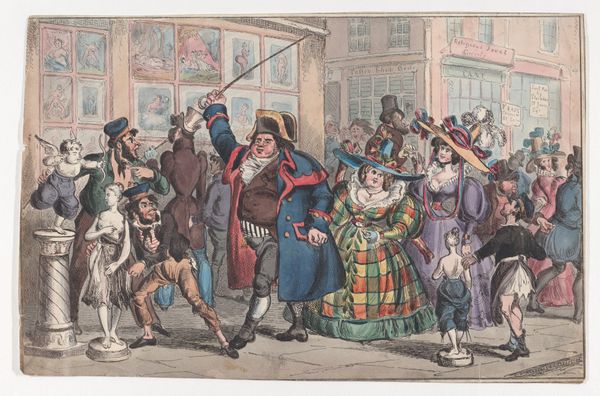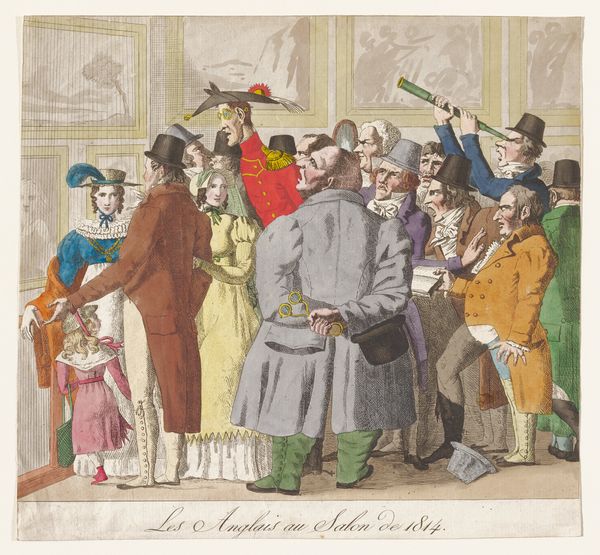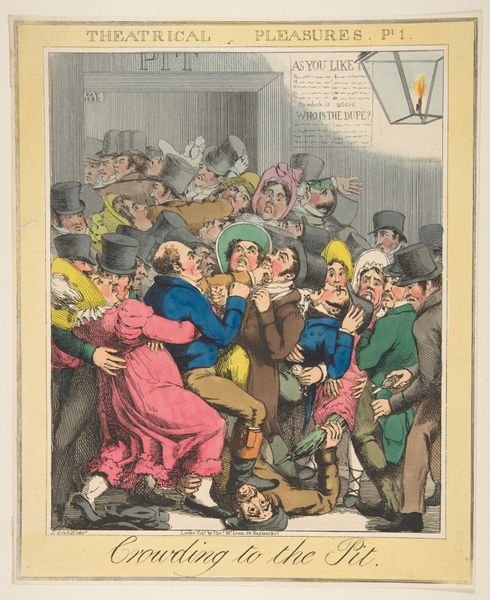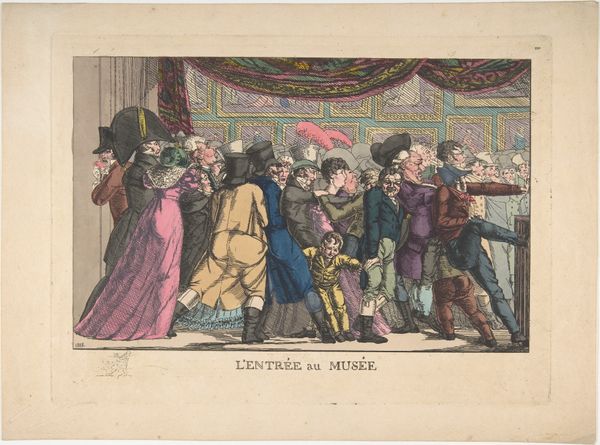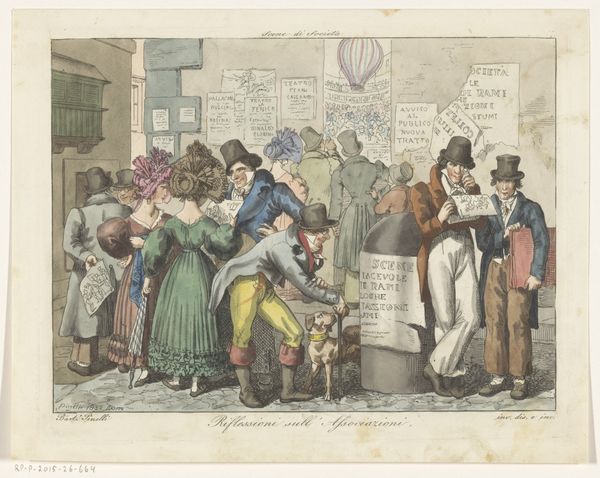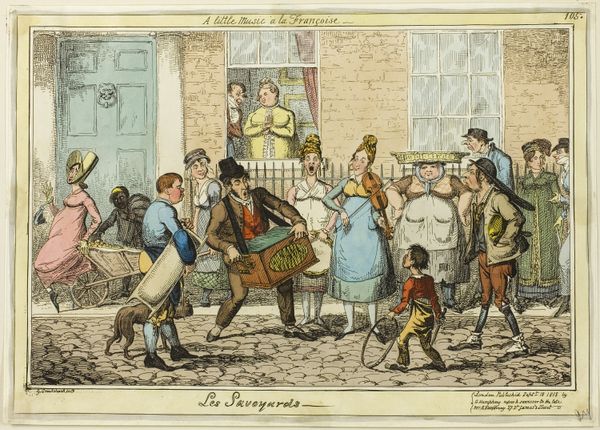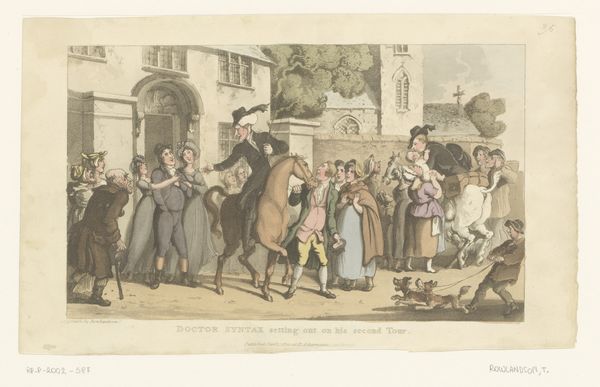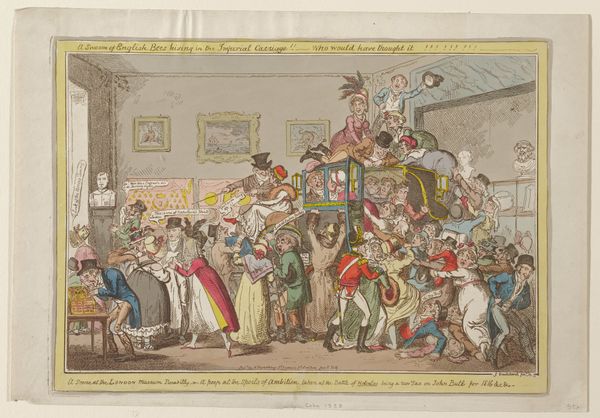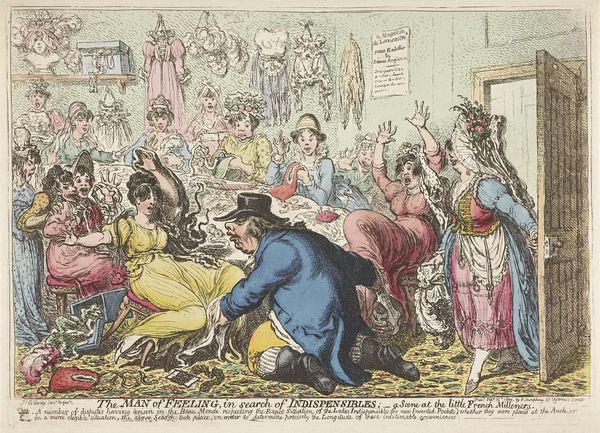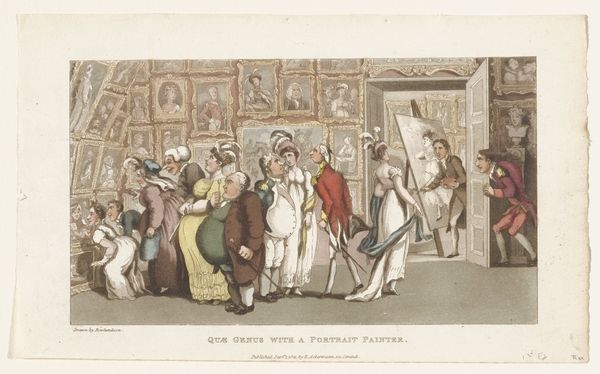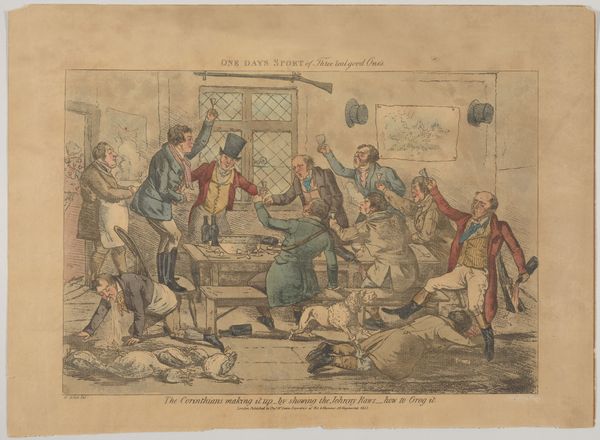
Menigte voor de etalage van uitgever Aaron Martinet in de Rue du Coq te Parijs 1803 - 1805
0:00
0:00
lithograph, print
#
neoclacissism
#
lithograph
# print
#
caricature
#
cityscape
#
genre-painting
Dimensions: height 250 mm, width 408 mm
Copyright: Rijks Museum: Open Domain
Curator: What a lively street scene! This is "Menigte voor de etalage van uitgever Aaron Martinet in de Rue du Coq te Parijs," or "Crowd in front of the shop window of publisher Aaron Martinet on the Rue du Coq in Paris." It’s a lithograph by Pierre Nolasque Bergeret, dating from around 1803-1805. Editor: My first impression is controlled chaos! There's such a jumble of bodies, all squeezed together, seemingly fighting for space in front of this shop. The textures look almost… rough, like quickly scratched marks. Curator: Yes, Bergeret really captures the hustle and bustle of Parisian street life at the time. Note the shop window—it's a window into the world of early 19th-century publishing and visual culture. Martinet was a significant publisher of prints, especially caricatures. Editor: That’s what's so striking. It makes me consider the printing process, the sheer number of lithographs produced and consumed. The drawing style has some very odd linework and odd choices of angles to define the figures in the street! It was very clearly created en-masse and distributed rapidly through Paris. Curator: Exactly! This image offers a window into the emerging public sphere and the growing importance of visual media in shaping public opinion. It provides insight into political and social satire. What messages were being transmitted here to viewers? Editor: I’m also considering what those prints in the window were printed on – the type of paper, the ink – and how readily available such materials might have been in a turbulent time period. The level of production itself hints at what common people valued back then! Curator: We might reflect on the purpose this work served. Beyond documentation, could the drawing’s somewhat satirical character provide social critique, pointing out absurdities? It reflects the broader use of caricature during that era, acting as a form of social commentary. Editor: Absolutely, it makes me want to examine more closely the materials Bergeret had at hand and the speed in which this process occurred.. It tells its own, equally interesting narrative to that within the image! Curator: A fascinating intersection of material production, social life, and the burgeoning power of the image. Thank you for your insight! Editor: The pleasure was all mine. Seeing the image production's relation to everyday society certainly expands our understanding of its cultural footprint.
Comments
No comments
Be the first to comment and join the conversation on the ultimate creative platform.
